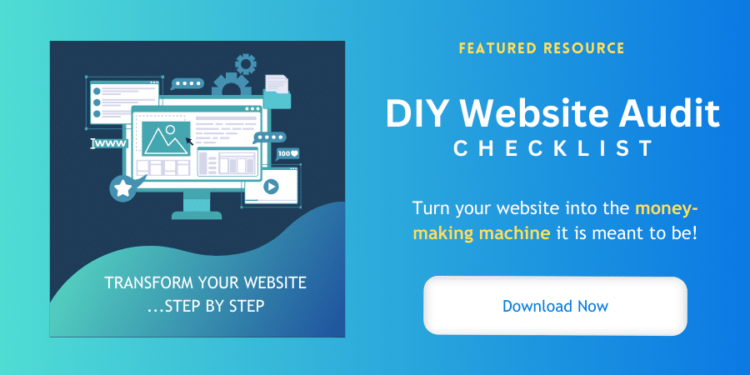Some links in this post are from partners. Regardless of relationship, our commitment is to provide you with accurate, reliable information that will help your business thrive.
In today’s fast-paced business landscape, maximizing efficiency is the key to achieving sustained success. Marketing automation offers a game-changing solution to streamline your operations, saving you both time and effort.
In this post, we’ll dive deep into the world of marketing automation to help you understand its benefits, components, and how to integrate it into your business.
What is Marketing Automation?
Marketing automation is the process of using software platforms and technologies to automate repetitive marketing tasks, optimize workflows, and measure the effectiveness of campaigns.
By leveraging these tools, organizations can efficiently manage their marketing efforts, nurture customer relationships, and strengthen brand consistency.
Top Benefits of Marketing Automation
Enhanced Lead Generation
Marketing automation tools can help in attracting and nurturing leads. With features like email marketing, social media scheduling, and content management, these tools can help businesses reach their audience more effectively and convert leads into customers.
Increased Revenue
By automating routine tasks, marketing teams can focus more on strategy and creative work. This not only boosts productivity but also can lead to more successful campaigns and, ultimately, increased revenue.
Improved Customer Experience
With marketing automation, businesses can deliver a personalized customer experience. The tools can track customer behavior and preferences, allowing for customized messaging and interaction. This frequently leads to enhanced customer satisfaction and loyalty.
Better Analytics
Marketing automation tools also provide comprehensive analytics and reporting features. This enables businesses to measure the success of their campaigns and understand their audience better. Plus, it leads to data-driven decisions that improve future strategies.
Time Savings
The most apparent advantage of marketing automation is the time it saves on mundane tasks. Manually managing marketing activities can be cumbersome, inefficient, and prone to errors. Automating these tasks ensures that they’re completed quickly and accurately. This leaves your marketing team with more time to focus on creative, revenue-generating responsibilities.
Challenges of Marketing Automation
Despite the many benefits, marketing automation also presents some challenges. They include:
- Setup and integration: the initial setup and integration can be complex and time-consuming.
- Training and experience: using these tools effectively requires significant training and experience, which may demand additional investment.
- Data privacy: another concern is data privacy. Automation tools often collect and process a large amount of customer information, requiring robust security measures.
- Depersonalization: while automation can streamline routine tasks, it may also depersonalize the customer experience if not properly managed, potentially leading to decreased customer engagement and loyalty.
Rewards Prevail
While there are challenges of marketing automation, it’s important to understand that the benefits significantly offset them.
The initial setup and integration may be time-consuming and complex, but once implemented correctly, automation tools can significantly increase efficiency, allowing for greater scalability of marketing efforts.
Plus, the demand for training and experience can be viewed as an investment towards enhancing the team’s skill set and overall productivity.
And while data privacy is a concern, most reputable automation tools comply with international security standards, ensuring that customer data is secure.
As for the potential depersonalization of the customer experience, this can be managed. By effectively leveraging the customization and personalization capabilities of these tools, customers are delivered tailored, more relevant content.
In the long run, the benefits – improved customer engagement, superior analytics, time-saving, and increased revenue – far outweigh the challenges, making marketing automation a worthy investment for most businesses.
Marketing Automation Integration Strategies
Website Integration
To reap the full benefits of marketing automation, it’s crucial to integrate it into your existing website. By doing so, you can track and analyze user behavior, gather data on your online visitors, and personalize their experience based on their preferences.
Social Media Integration
Marketing automation can also be integrated with your social media platforms. This allows you to schedule posts, track engagement metrics, and manage all your social accounts from a single dashboard, saving time and resources. You can also use this integration to automate responses to frequently asked questions or comments to increase responsiveness.
CRM Integration
Integrating your marketing automation tools with your Customer Relationship Management (CRM) system is another smart strategy. This integration enables you to sync lead and customer data, allowing your sales and marketing teams to work in harmony. By maintaining an updated database, you can provide personalized experiences, manage customer relationships effectively, and streamline your marketing efforts.
E-commerce Integration
If you run an e-commerce business, integrating marketing automation can help you track user behavior, automate cart abandonment emails, and personalize product recommendations, which can significantly enhance the customer experience and increase sales.
Phasing in Integrations
Introducing these integrations can be a phased approach to prevent overwhelming your team and to ensure each stage is properly implemented.
Phase 1: Website Integration
The first logical stage is website integration. It serves as the foundation for data collection and user behavior analysis, which is beneficial for all subsequent phases. This phase involves installing tracking codes on your website, opt-in forms, marketing funnels, and email sequences.
Phase 2: CRM Integration
The next phase could be integrating your CRM system. With the collected data from your website, you can feed this information into your CRM. This synchronization ensures your customer data is always updated and sales and marketing teams have the most recent information at their disposal.
Phase 3: Social Media Integration
Once you have a firm grip on your website and CRM data, you can extend to Social Media Integration. This phase enables you to manage social media platforms from a centralized location and enhances your ability to respond promptly to customer inquiries.
Phase 4: E-commerce Integration
The final phase, E-commerce integration, is crucial for businesses selling products online. At this stage, you’re ready to leverage the power of automation to track user behavior on your e-commerce platform, trigger personalized product recommendations, and deploy cart abandonment emails. This phase completes your marketing automation strategy, creating a fully integrated system that works seamlessly across all sectors of your business.
Pro Tip
Don’t have a clue how to set up funnels and email automations for your website? No problem – it’s easy! Even better – there’s a FREE full service marketing platform that does the work for you! Find out how!
Getting Started With Your Website
Setting the foundation with website integration, following are some of the typical marketing automation components and key features you’ll find:
Marketing Funnels
At the heart of marketing automation are marketing funnels. These are structured, step-by-step pathways that guide potential customers from the initial point of contact to the final sales conversion. Automating these funnels ensures a smoother customer journey and results in more significant conversions and increased revenue.
Drip Campaigns
Drip campaigns are automated email sequences sent to subscribers based on their actions and behavior. By scheduling messages to be sent at optimal times, businesses can maintain frequent touchpoints with their customer base, leading to higher engagement and improved customer relationship management.
Lead Capture Pages
These are web pages also known as landing pages designed to present potential customers with incentives to share their contact information. By integrating marketing automation tools into lead capture pages, you can automate the process of capturing, scoring, and nurturing leads to improve your sales conversion pipeline.
Email Marketing
Email marketing is a critical component of marketing automation. By using automation software, businesses can segment their subscriber lists, create targeted campaigns, and analyze engagement metrics to continually improve their email marketing strategy.
Tips for Successful Implementation
- Define Clear Objectives: Understand your business needs and establish clear objectives for your automation strategy. Whether it’s increasing customer engagement, boosting sales conversions, or improving lead nurturing, having defined goals will guide your implementation process.
- Choose the Right Tools: The market is flooded with numerous marketing automation tools, each with unique features. Choose a tool that aligns with your business needs and has features that cater to your specific objectives.
- Segment Your Audience: Segmentation allows for targeted communication that caters to the specific needs and preferences of different customer groups. This can greatly enhance the effectiveness of your automation strategy.
- Test and Optimize: Always test your automation strategies to ensure they’re working as expected. Use A/B testing for emails, landing pages, and other touchpoints in your sales funnel. Analyze the results and continually optimize for better performance.
- Training: Ensure that your marketing team is well-versed with the chosen automation tool. This will enable them to effectively use the tool, leading to a successful implementation.
- Customer-Centric Approach: Keep your customers at the heart of your automation strategy. Personalize your communication and ensure that your automated messages don’t come off as robotic or impersonal.
Remember, successful implementation of marketing automation requires careful planning, continuous monitoring, and regular adjustments based on performance metrics.
Platform Examples and Features
Several software platforms offer marketing automation solutions. Here are a few popular options:
- Hubspot: This all-in-one marketing platform features CRM, email marketing, automated workflows, lead management, and social media marketing integrations.
- Systeme.io: As another comprehensive solution, Systeme.io includes email marketing, visual sales funnel builders, marketing automation workflows, CRM capabilities and more. Systeme.io provides a full-service free version of their platform featuring multiple funnels, email sequences, workflows, and CRM up to 4,000 contacts ideal for small businesses wanting to get started on marketing automation.
- Mailchimp: This platform is a popular choice for small businesses and nonprofits due to its user-friendly interface, email marketing capabilities, and automation workflows. Plus, its freemium model makes it an affordable choice for smaller teams.
- ActiveCampaign: Known for its advanced automation features, ActiveCampaign is ideal for small businesses looking to build complex customer journeys. It integrates with over 280 apps, including ecommerce platforms and CRM systems.
- ConvertKit: Designed specifically for creatives and online entrepreneurs, ConvertKit offers powerful email marketing and automation tools. Its visual automation builder is particularly useful for small businesses.
- SendinBlue: This platform provides an excellent balance of email marketing, SMS marketing, and marketing automation tools. Its pay-as-you-go pricing model is particularly suited for small businesses and nonprofits operating on a tight budget.
- Drip: Best for ecommerce businesses, Drip’s marketing automation platform is designed to handle complex customer journeys. It offers a wide range of features, including email marketing, analytics, multichannel touchpoints, and more.
Each of these platforms has its strengths and weaknesses. It’s essential to evaluate your organization’s needs before selecting the most suitable option.
Current Trends and Statistics
The rise of Artificial Intelligence (AI) in marketing automation is revolutionizing the way businesses operate. By harnessing AI’s power, marketing automation software can analyze user data more effectively, predict user behavior, and optimize recommendations for target audiences. By staying ahead of these trends, businesses can ensure they maintain a competitive edge in the ever-evolving marketing landscape.
Final Thoughts on Marketing Automation
Marketing automation is no longer a luxury but a necessity for small businesses seeking growth and efficiency. Navigating through the many available platforms may seem daunting, but by identifying core business needs and goals, small businesses can find an automation tool that aligns with their strategies.
Adoption of marketing automation doesn’t imply replacing the human touch. Instead, it’s about reinforcing and enhancing personal connections at scale. By embracing marketing automation, small businesses can elevate their marketing strategies, deliver personalized customer experiences, and ultimately drive significant business growth


